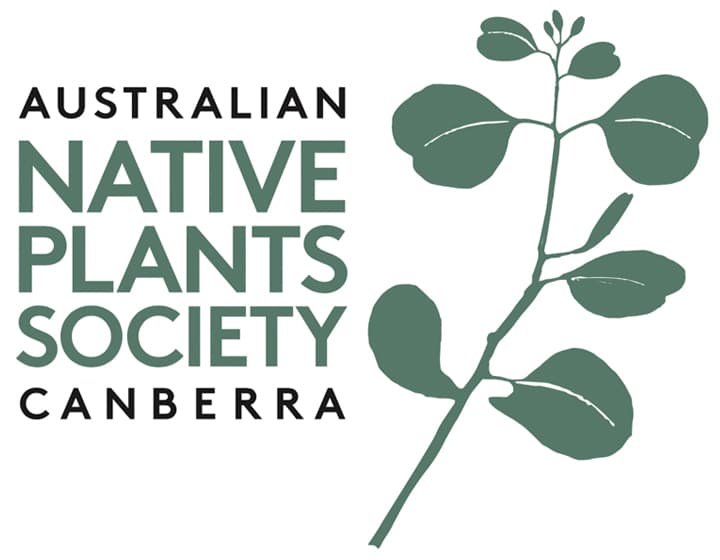Dawson Street Gardens — Creation of a Native Plant Oasis in Suburban Curtin
By Lyndal Thorburn, photos by Lyndal Thorburn unless otherwise stated
Mar, 2024
In February 2024 Tom Jordan and I were invited to lunch at the Dawson St Gardens in Curtin.
The Dawson St. gardens is the initiative of a community group led by Dr John Davison-Mowle, who lives close to this street. Originally, this was an area of 2.7Ha of grass, bounded by the U-shaped part of Dawson St and Theodore St in Curtin (a major vehicular thoroughfare). According to John, it was covered in couch and had been planted many years ago with 8 Eucalyptus mannifera which were, by 2019, well-established and provided some shade. The ACT government had added some ‘improvements’ by way of several deciduous trees including red prunus. The site is almost opposite Holy Trinity Primary School and is also close to an aged care home.
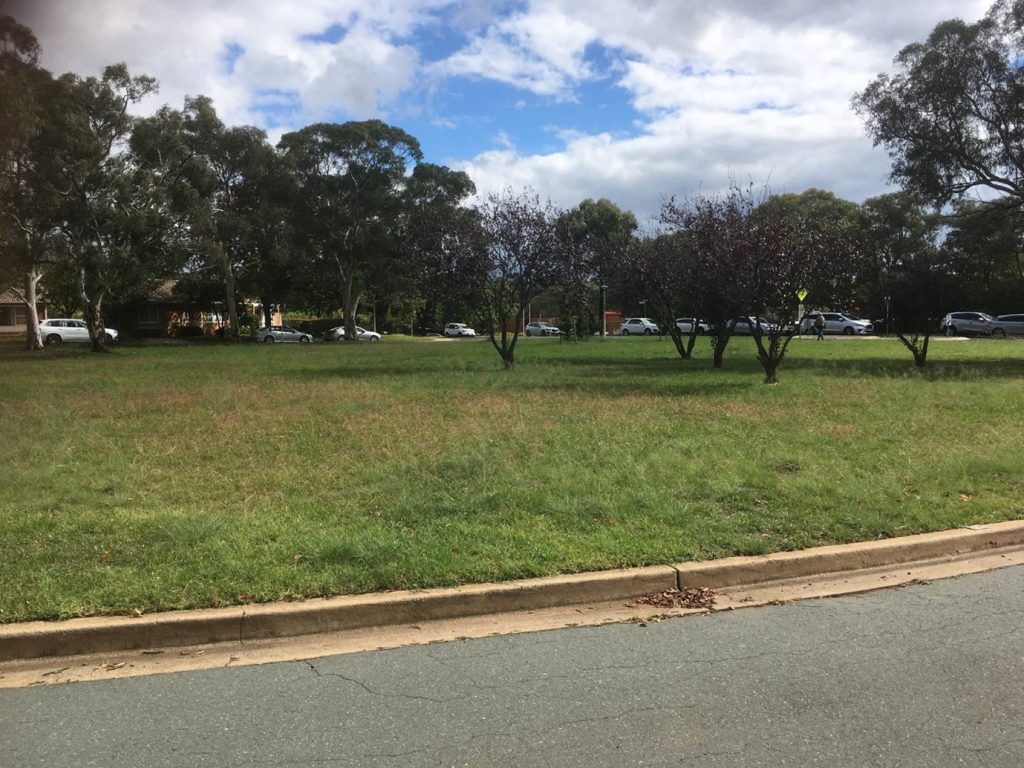
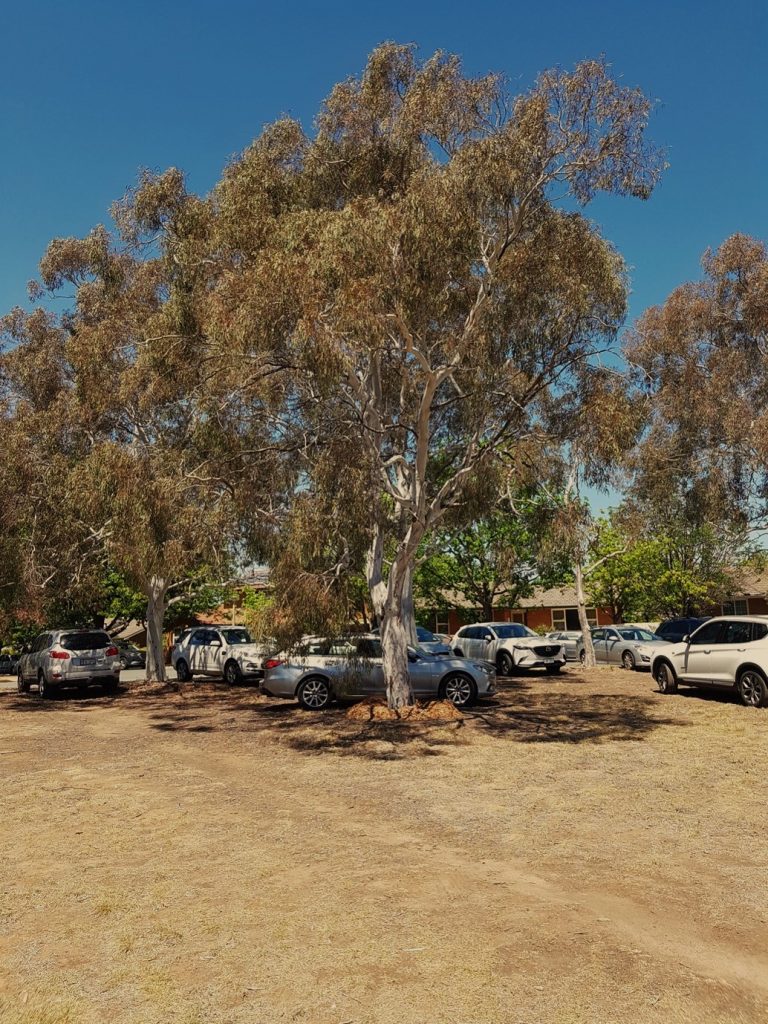
These Eucalypts, planted in 1965, had been watered and cared for over many years by one of the land-owners facing the grassed area, and now stand 20 metres tall. One is listed on the ACT Heritage Tree Register as it is believed to be a rare weeping form of this species.
Dawson St Gardens (as compared to the Dawson St grassy parking lot) started in 2019 and was originally named the Curtin Environmental Educational Park. John Davison-Mowle, as primary instigator, approached local residents and a group was formed that applied for an ACT government Environment in the City Grant. This application, for approx. $18,000, was successful, enabling the purchase of native species, input from indigenous elders on Ngunnawal custodianship and plant selection, soil for some raised beds, and signage, including metal signs with QR codes to open source information about the plants.
Dawson St Gardens (as compared to the Dawson St grassy parking lot) started in 2019 and was originally named the Curtin Environmental Educational Park. John Davison-Mowle, as primary instigator, approached local residents and a group was formed that applied for an ACT government Environment in the City Grant . This application, for approx. $18000, was successful, enabling the purchase of native species, input from indigenous elders on Ngunnawal custodianship and plant selection, soil for some raised beds, and signage, including metal signs with QR codes to open source information about the plants.
The group decided to focus on natives that would grow well locally, and not be limited to those that are deemed local species. Hence, there are several Grevilleas (including but not limited to the rare-in-the-wild G. iaspicula), Xerochrysum viscosum, Correas (e.g. Correa pulchella x ‘Little Cate’), Eremophila glabra and many grasses including Themeda sp. and Poa sp.
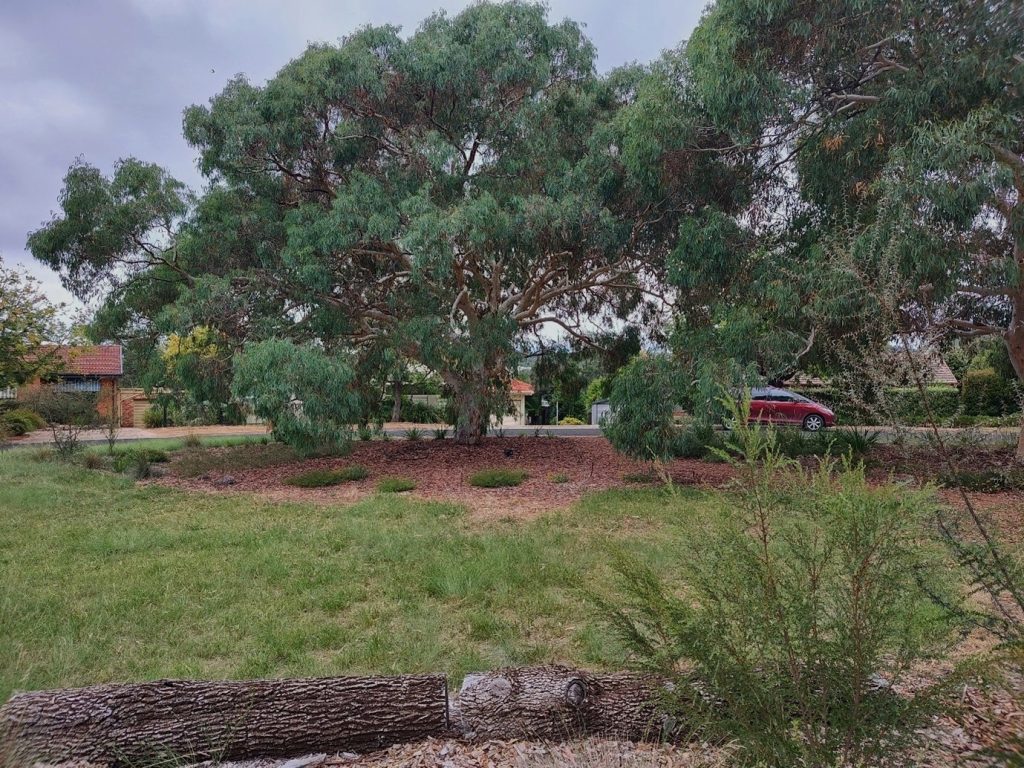
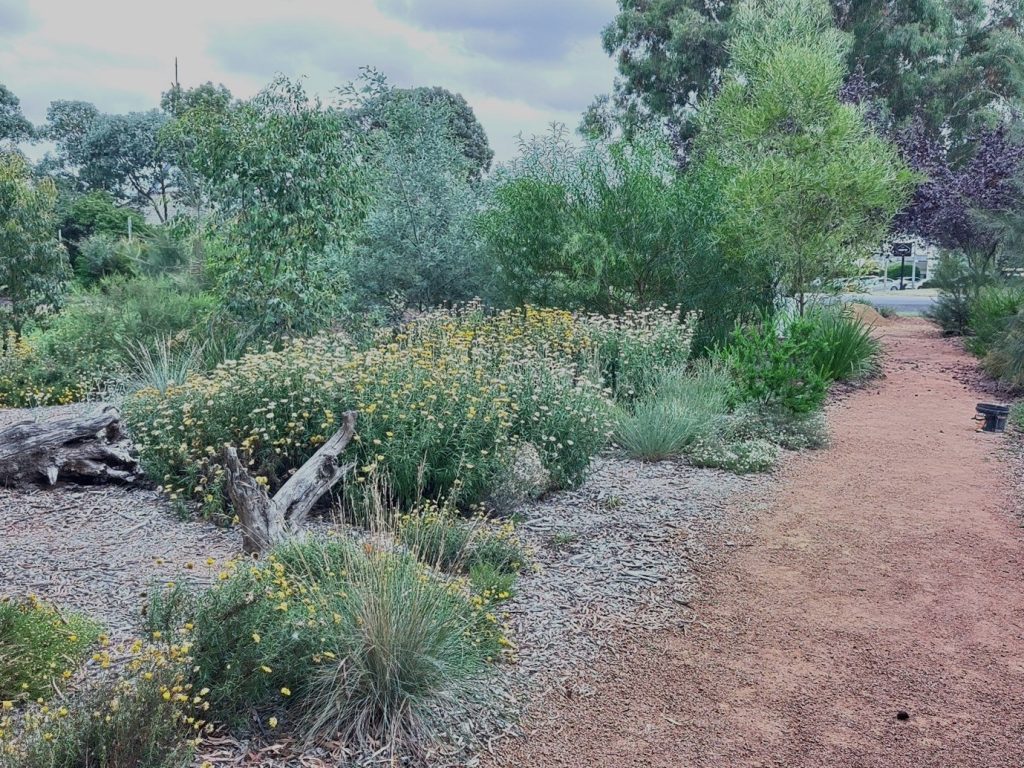
There is also a ‘prickly corner’ with Bursaria spinosa (a local species), hakea and prickly acacias. These are intended to encourage small birds into the area.
The ACT’s assistance with landscaping has allowed the group to install a yarning circle made of blocks of stone for local school kids to sit and discuss nature. There have now been over 20 visits from school groups from both the local public and Catholic primary school. These visits included planting and mulching as well as environmental education and input concerning native insects from Canberra Nature Map. A picnic table will soon be installed so locals can enjoy lunch in the gardens.
There has also been vigorous discussion with government representatives about whether the areas immediately beneath the Eucalypts should be planted, or whether the area under the dripline should be mulched but remain free of plants. There seems to be a view amongst plant conservators that growing other species under the eucalypts will damage their roots. However, most of us will know there can be extensive vegetation under Eucalypts in the wild, and the bigger problem is getting anything to grow there, given the tendency of large trees to suck water out of the soil. For now, the group is using groundcovers and low Correas to fill in these areas.
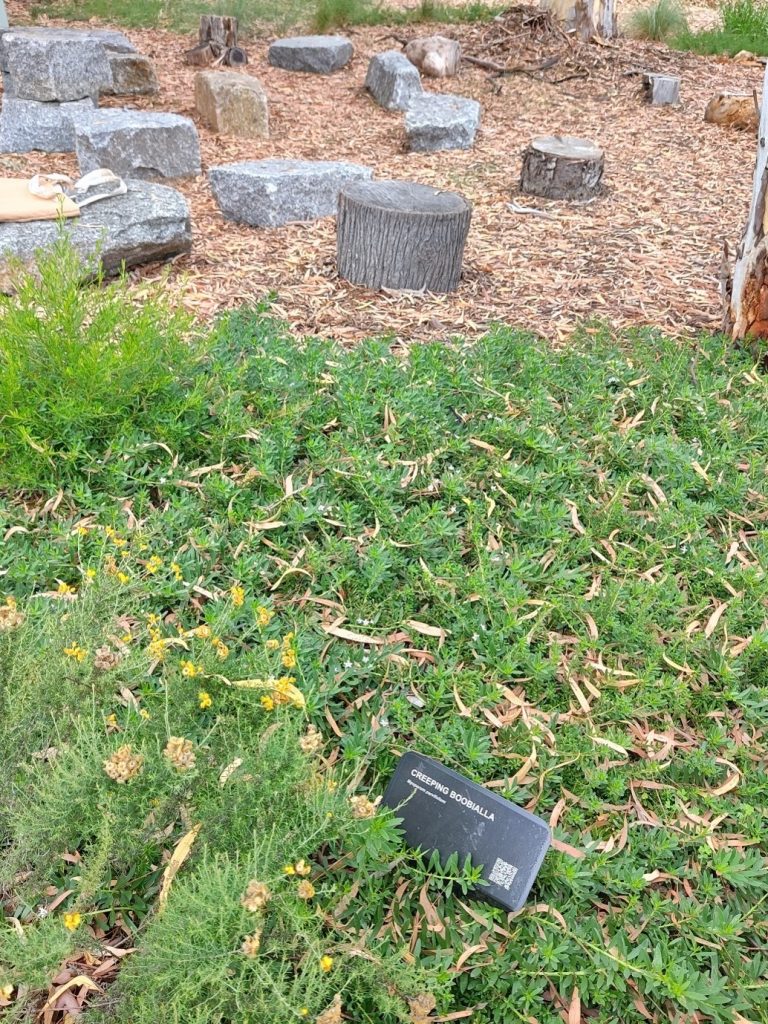
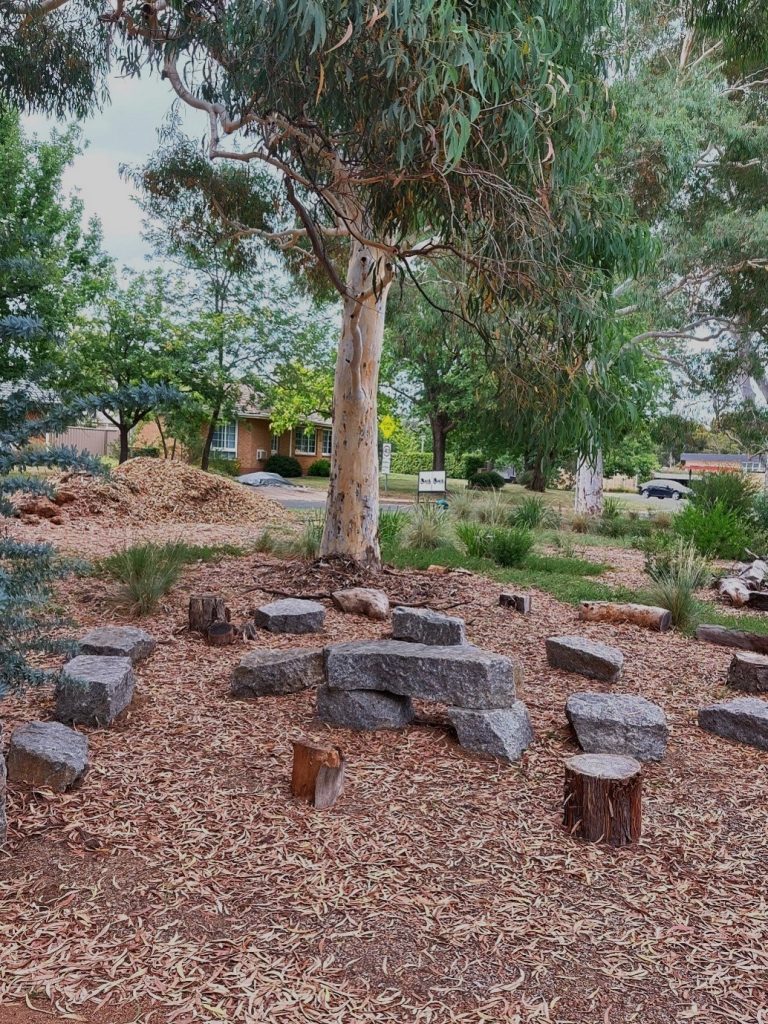
The latest initiative has been a new set of garden beds around a curved walkway, where up to 400 new plants will be densely planted and (it is hoped) will take over some of the space that was previously allocated to deciduous trees. The planting will be guided by ‘Woody Meadow’ principles as developed in Melbourne University. These advocate diverse shrub plantings maintained by coppicing (hard-pruning to 10–20 cm) to promote flowering and to create dense canopies to exclude weeds.
It is striking that few of the houses immediately facing the area include native plant species. There are certainly native birds around but these are mostly larger birds and include some species which discourage the smaller varieties. John is hoping that when more native birds are attracted, as the prickly plants grow and bird-attracting species such as Calothamnus quadrifidus flower, that more local attitudes will change, and smaller species of birds will be attracted.
Plenty of insects have already made the gardens their home. Over 230 insects and arthropods have been recorded in Canberra Nature Mapr for the site. Three pictures of these are shown below — a jumping spider, a Eucalyptus beetle and a green potato bug.
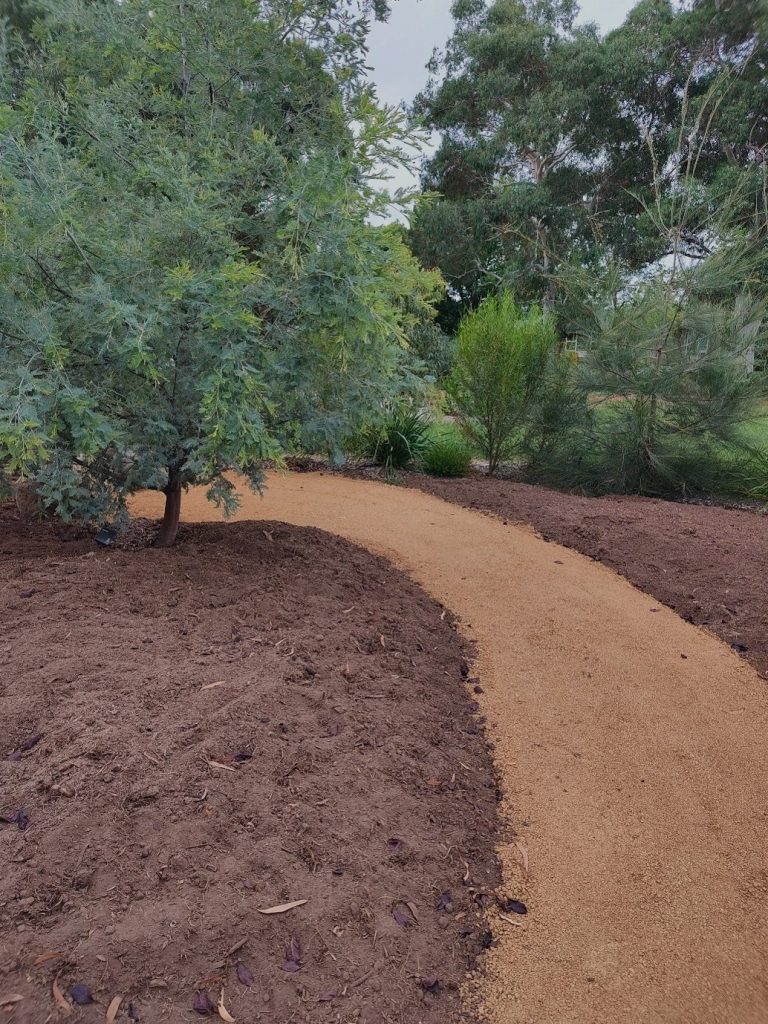
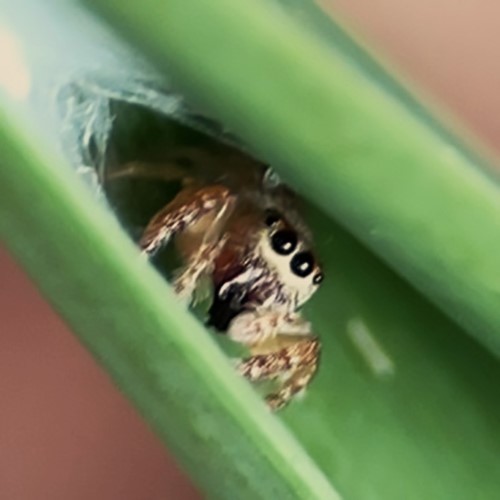
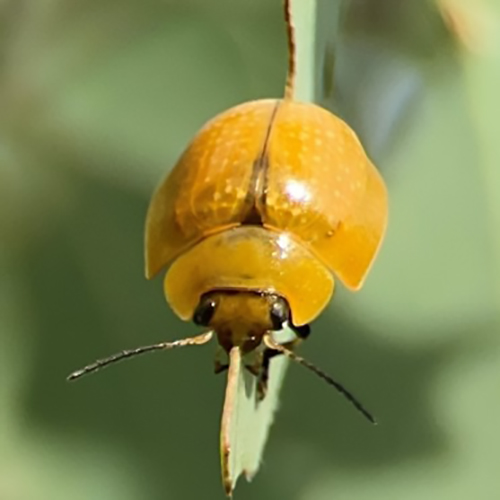
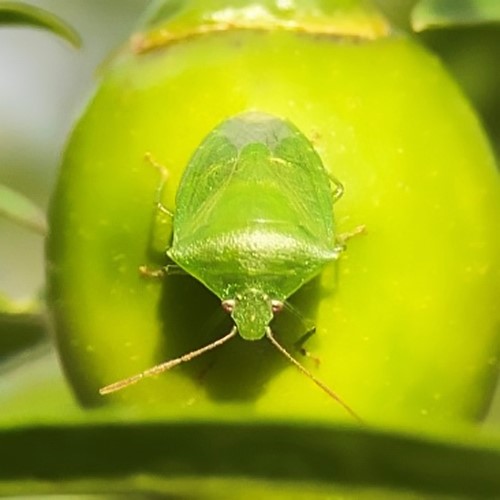
One thing that is missing is water. At the moment, plants are hand-watered when planted and during early growth or dry times and it seems unlikely that any permanent source will be developed because of the location in a public space, lack of room for a dam, and potential risk. However, many of the plant species are drought-hardy. The community group attends regular working bees and spends its time pruning, mulching and weeding. Plants are purchased from local suppliers.
The gardens are still young. With lots of community involvement and government support it has a bright future. The group spreads the word about natives through local events including the Curtin Spring Fair, has links with the Molonglo Conservation Group, and aims to keep the youngsters engaged through regular visits to the site.
John Davison-Mowle is keen for further input from the knowledgeable public and invites comment, particularly regarding the debate on planting under Eucalypts. He can be contacted via the group’s Facebook page: https://www.facebook.com/CurtinGardenGroup.
Back to Articles List
